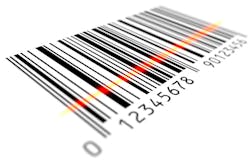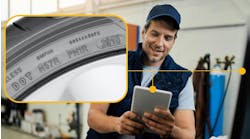The mere mention of the year 2003 makes Rob Korth uneasy.
Hearing the parts director’s recollections, it seems understandable. Because that’s the year Korth began leading the parts department at a new Chrysler dealership in Florida. And, once he took the reigns of that department, Korth was saddled with a monumental task that new dealerships often are presented with: storing and documenting $500,000 worth of inventory.
Because Chrysler preferred to send packing slips with parts orders, Korth and his staff had an imposing challenge on their hands.
“When you have half a million dollars of inventory,” Korth notes, “to try and go through thousands of pages to confirm the quantity—to make sure what they say they shipped you [actually] received—what a time-consuming process that would’ve been.
“We’d probably still be doing it,” he adds, with a laugh.
Nowadays, Korth serves as the corporate parts director for the Napleton Automotive Group and helps lead 44 total dealership locations. Aside from the occasionally hectic travel that his current role requires, his work is far less stressful these days.
He rarely has to sift through packing slips anymore, and his procedures for documenting inventory are far more streamlined than they were 15 years ago, when he set foot at that Chrysler dealership.
A key reason for that: barcoding scanners, which Korth calls “a huge time saver.”
The Problem
As the semis rolled in to that new Chrysler facility 15 years back, lugging load after load of parts, Korth did the math in his head.
The process of logging in all that inventory—creating bins, and putting everything away in orderly fashion—looked like it might take as much as three weeks.
And Korth’s staff didn’t have that kind of time.
Fortunately, the parts director had an inkling that there must be a more efficient way of keeping tabs on a parts inventory than looking at countless packing slips. Fortunately, Korth had heard of a bar-coding system created by Automotive Business Solutions (ABS).
He gave the bar-coding technology a try, and it quickly made his concerns a distant memory.
“Without barcoding, you’re basically just at a point where you’re throwing things on the shelves,” Korth notes. “And then, good luck trying to find it.
“You have a situation where, OK, I’m open for business, I’ve got [parts inventory] here, but I have no idea where it’s all at. With barcoding, it saved us all that headache and aggravation.”
The Solution
With the addition of barcoding technology, all those parts trucks could barely keep pace with Korth’s parts department back in 2003.
To put it simply, the ABS barcoding system—which utilizes scanners like those seen at big-box retail stores—was far more efficient than logging parts manually.
“Huge time saver,” Korth says. “We scan the part, we punch in a bin number location for it, we put it on the shelf, and we have a label for it. In just a matter of seconds, it can do all that for you.”
Three weeks? Hardly. By utilizing bar code scanners, the facility logged in
$500,000 worth of parts inventory in the equivalent of one long weekend.
“With the barcoding, I think it took us three days,” Korth recalls. “We had two guys with scanners, and they were just scanning away. … We’d call and say, ‘OK, we’re ready for another semi load.’ That helped, because we were in the process of opening a new store, so we needed to get people trained on the computer system.”
According to Korth, using wireless barcode scanners provided his old Chrysler facility with several benefits, in areas like checking in orders.
If you’re logging in inventory manually, Korth notes, you often have to look at a sheet of paper to take note of your special-order parts. With barcode scanning, however, “it recognizes, as soon as you scan that bar code, that it’s a special order for a customer and creates a label for it, so you can put it on there and know what date it came in.
“Once you have everything in and on the shelf, and in the right place, you just download the information into your scanner—it gives you so much more flexibility in checking in your orders.”
More than anything, using barcode technology helps parts departments eliminate most potential for human error, Korth says.
“I mean, after you look at these [parts] numbers for so long,” he explains, “you start transposing; that looked like an ‘8’ last night, and now I see it as an ‘e’, you know?”
The Results
Korth is no longer a parts director in charge of just one Florida facility. In 2018, he’s in charge of overseeing 160 total employees in parts departments spread throughout seven total states for Napleton Automotive. As such, he needs to utilize any means for creating efficiency he possibly can.
And tools like barcoding technology certainly help in that pursuit.
“In all the stores that we have barcoding technology,” Korth says, “those are always some of the cleanest inventory stores that we have.
“Having [all] that information readily available on the part makes it very simple. … When you have the barcode scanning, you can have an order knocked out in 10 or 15 minutes.
“If keeping a clean inventory is important to you, then barcoding is the way to go.”



